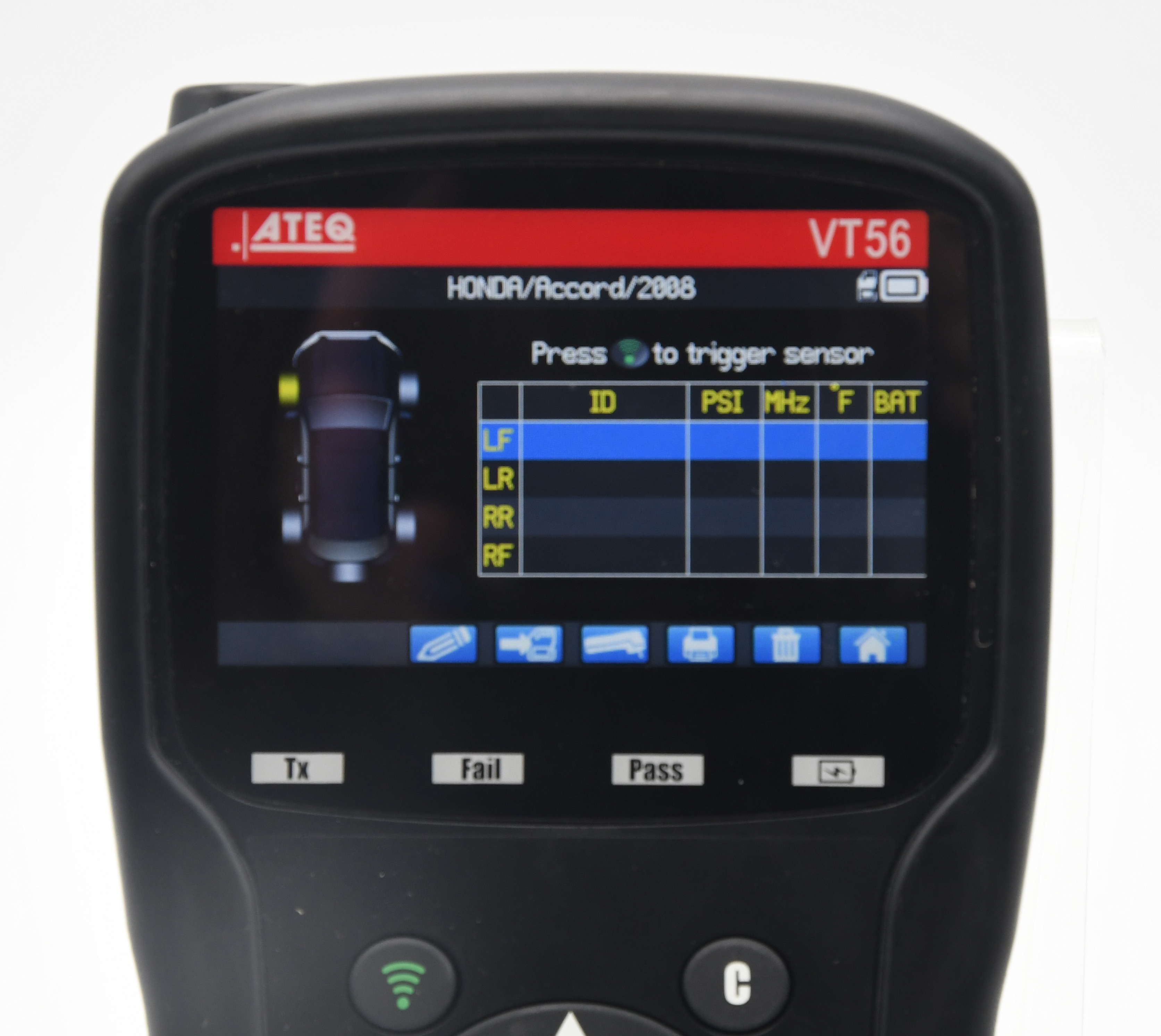Back to the news page
12.14.2018
TPMS diagnostic information on the top-selling vehicles of 2008 – Honda Accord
After the TREAD Act was mandated in 2007, all vehicles manufactured in the United States, beginning in 2008, must have direct or indirect TPMS systems installed. The Direct TPMS system uses TPMS sensors in the wheel to send information to the vehicle’s ECU to report sensor malfunction or low tire pressure. The Indirect TPMS system uses the ABS system to send information to the vehicle to report low tire pressure.
According to U.S. News and World Report, the top three selling vehicles in 2008 were:
Each week, we will explore the diagnostics of the TPMS system of each vehicle, and teach you how to properly reset the system. This week, we will be going over the 2008 Honda Accord.
Before performing a relearn procedure, it is important to make sure the tires are inflated to placard pressure.
 Honda Accord (2008)
Honda Accord (2008)All service kits and OE-type (one-to-one) TPMS sensor options for the Honda Accord 2008 can be found in your VT56, VT55, and VT36 TPMS Tools in “Service TPMS”.
From 2008 to 2012, Honda Accord used the direct TPMS system, which means TPMS sensors are installed in the vehicle, sending information to the vehicle’s ECU from the TPMS sensor. In 2013, Honda switched to an indirect system, which does not use TPMS sensors to transfer tire pressure data. Instead, it uses the ABS system to send information about tire pressure to the vehicle, so no sensors are installed in the wheel. However, an indirect TPMS relearn procedure must be performed to recalibrate the system, which can be found in the SERVICE menu of the VT56.

During the steps, most manufacturers require TPMS sensor activation in the following series: left front, right front, right rear, and left rear. However, Honda’s TPMS series of sensor activation during the relearn procedure is reversed. The correct order for the TPMS sensor activation during the TPMS relearn procedure to write the new sensor ID’s to the vehicle’s ECU is: left front, left rear, right rear and right front.

| 11 | Low Tire Pressure Left Front Tire |
| 13 | Low Tire Pressure Left Rear Tire |
| 15 | Low Tire Pressure Right Rear Tire |
| 17 | Low Tire Pressure Right Front Tire |
| 21 | Abnormally High Tire Sensor Temperature Right Front Tire |
| 22 | Abnormally High Tire Sensor Temperature Left Front Tire |
| 23 | Abnormally High Tire Sensor Temperature Right Rear Tire |
| 24 | Abnormally High Tire Sensor Temperature Left Rear Tire |
| 31 | Tire Pressure Sensor Low Battery Voltage Right Front Tire |
| 32 | Tire Pressure Sensor Transmitting Failure Right Front Tire |
| 33 | Tire Pressure Sensor Low Battery Voltage Left Front Tire |
| 34 | Tire Pressure Sensor Transmitting Failure Left Front Tire |
| 35 | Tire Pressure Sensor Low Battery Voltage Right Rear Tire |
| 36 | Tire Pressure Sensor Transmitting Failure Right Rear Tire |
| 37 | Tire Pressure Sensor Low Battery Voltage Left Rear Tire |
| 38 | Tire Pressure Sensor Transmitting Failure Left Rear Tire |
| 41 | Abnormal Signal Reception Error |
| 45 | Initiator Circuit Short Detection |
| 51 | Initialization Status Of TPMS Control Unit is Not Completed Right Front Tire |
| 53 | Initialization Status Of TPMS Control Unit is Not Completed Left Front Tire |
| 55 | Initialization Status Of TPMS Control Unit is Not Completed Right Rear Tire |
| 57 | Initialization Status Of TPMS Control Unit is Not Completed Left Rear Tire |
| 81 | TPMS Control Unit Failure (RAM, ROM, ADC, EEPROM, ALU) Check. |
| 83 | No VSP Signal |
| 85 | CAN Data Error |
| 91 | Tire Pressure Sensor Internal Error Right Front Tire |
| 93 | Tire Pressure Sensor Internal Error Left Front Tire |
| 95 | Tire Pressure Sensor Internal Error Right Rear Tire |
| 97 | Tire Pressure Sensor Internal Error Left Rear Tire |
The aftermarket provides technicians with many optio...
TPMS relearn procedure and other TPMS diagnostic sys...
Technological factors behind the TPMS tool you are u...